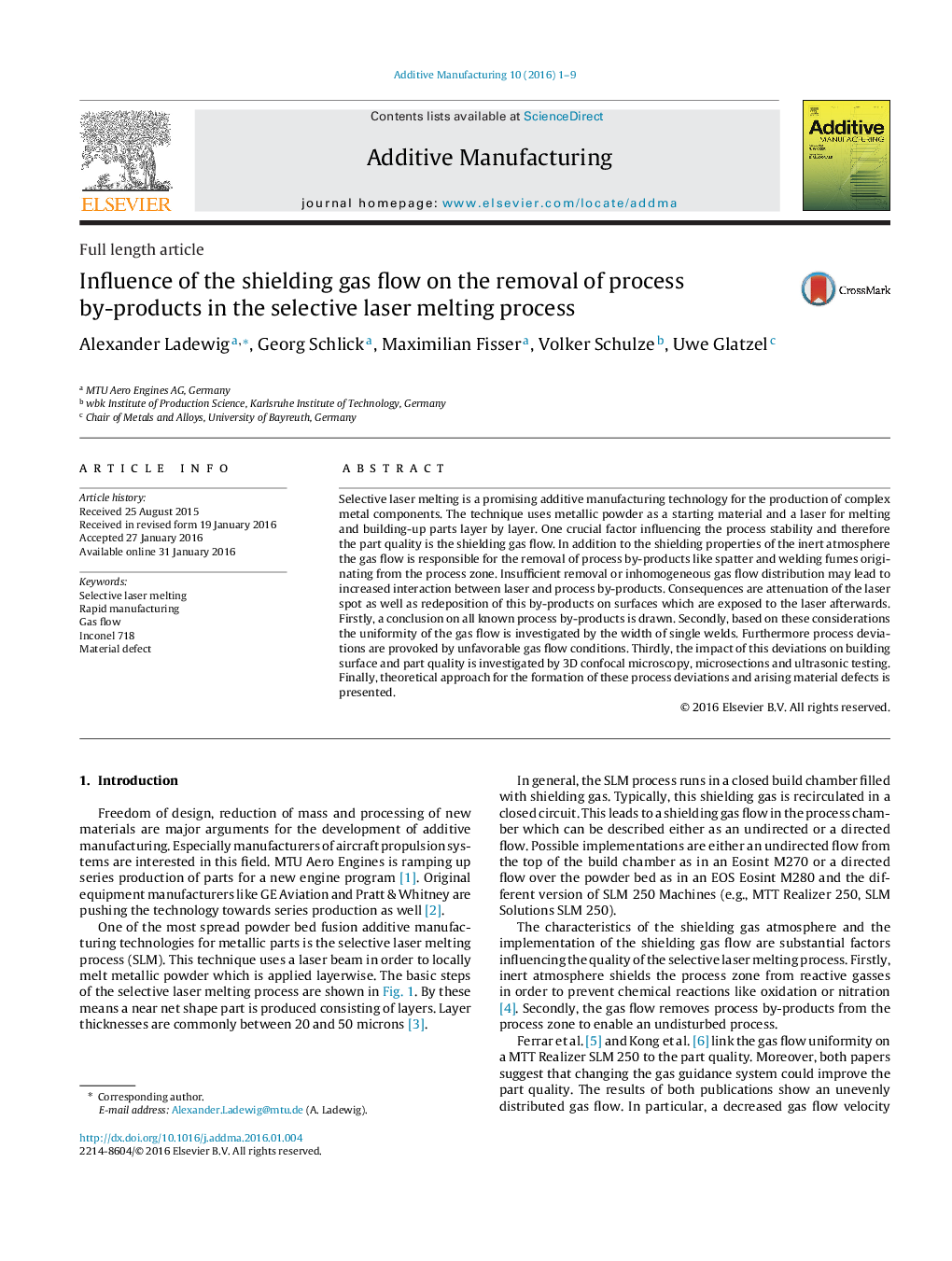| Article ID | Journal | Published Year | Pages | File Type |
|---|---|---|---|---|
| 7206004 | Additive Manufacturing | 2016 | 9 Pages |
Abstract
Selective laser melting is a promising additive manufacturing technology for the production of complex metal components. The technique uses metallic powder as a starting material and a laser for melting and building-up parts layer by layer. One crucial factor influencing the process stability and therefore the part quality is the shielding gas flow. In addition to the shielding properties of the inert atmosphere the gas flow is responsible for the removal of process by-products like spatter and welding fumes originating from the process zone. Insufficient removal or inhomogeneous gas flow distribution may lead to increased interaction between laser and process by-products. Consequences are attenuation of the laser spot as well as redeposition of this by-products on surfaces which are exposed to the laser afterwards. Firstly, a conclusion on all known process by-products is drawn. Secondly, based on these considerations the uniformity of the gas flow is investigated by the width of single welds. Furthermore process deviations are provoked by unfavorable gas flow conditions. Thirdly, the impact of this deviations on building surface and part quality is investigated by 3D confocal microscopy, microsections and ultrasonic testing. Finally, theoretical approach for the formation of these process deviations and arising material defects is presented.
Related Topics
Physical Sciences and Engineering
Engineering
Industrial and Manufacturing Engineering
Authors
Alexander Ladewig, Georg Schlick, Maximilian Fisser, Volker Schulze, Uwe Glatzel,
